Alfalfa as a siderat
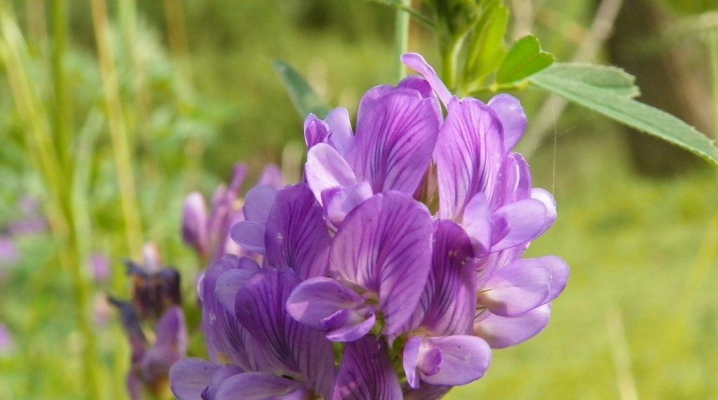
Currently, in order to make the soil the most nutritious and fertile, various green manures are used. They are special fertilizers that, among other things, can significantly increase yields. Alfalfa is often used as a green manure. Today we will talk about the main advantages and disadvantages of such plants, as well as how to plant them correctly.
Views
Currently, various varieties of such vegetation can be used to fertilize summer cottages.
- Blue sowing alfalfa. This culture is distinguished by the most lush terrestrial part. The stem height can vary from 40 to 80 centimeters. This type allows you to get 2 or 3 cuttings. Dense vegetation protects the site from erosion. The root system goes deep into the ground (2-3 meters). Such alfalfa can grow even on highly acidic soil, in one place it grows for 10-15 years. In this case, the maximum yield of green manure occurs 3-4 years after sowing.
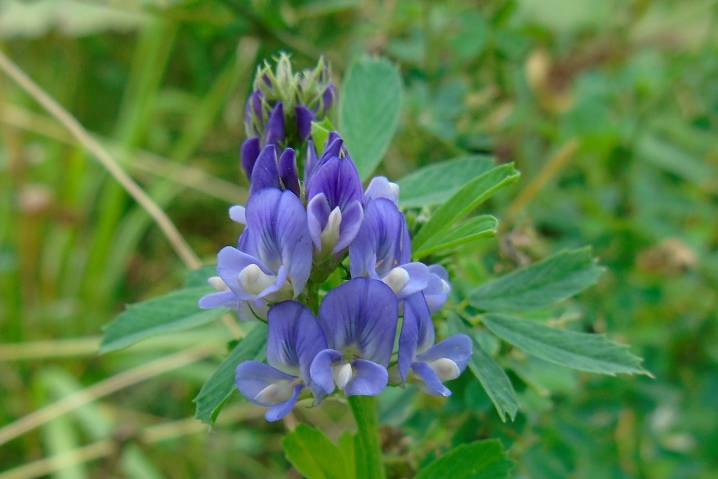
- Yellow sickle alfalfa. This variety has a height of 55-60 centimeters. It grows in one place for 5-7 years. This type of green manure boasts a special resistance to diseases and the actions of harmful organisms. The species can develop on almost any soil. In addition, yellow crescent alfalfa can easily tolerate extreme temperature fluctuations and frosts.
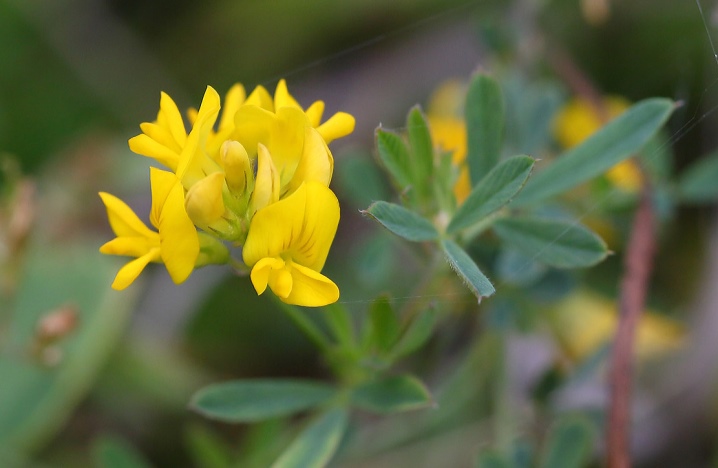
Advantages and disadvantages
Alfalfa has many important benefits as a green manure. Let's highlight the main ones.
- Recovery of fruiting. Alfalfa is able to restore even the most eroded areas.
- Improving air exchange. The root system of this plant perfectly penetrates the ground, which contributes to better air circulation. Moisture exchange may also increase.
- Accumulation of nitrogen-containing components. Alfalfa, when interacting with special nodule bacteria, begins to produce nitrogen on its own.
- It is the most effective green manure. Alfalfa is best used for those suburban areas that need to be improved thoroughly, this plant will be useful for more than two years.
- Soil protection. Such green manure allows you to protect the ground from freezing in the cold season, from excessive overheating in the heat, as well as from the negative effects of a large amount of moisture and strong winds.
- Sanitary properties. Vegetation is sometimes used to cleanse the soil from various pathogens and small pests. In addition, it will not allow weeds to appear on the site.
- Mulch formation. The plant grows rather quickly and builds up green mass, which is used in the future for mulching. Sometimes it is taken for livestock feed.
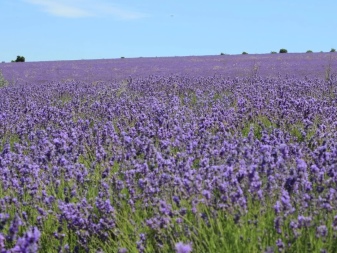

Despite all the above advantages, alfalfa as a siderat has a number of significant disadvantages.
- High price. Compared to other green manures and fertilizers, alfalfa has a rather high price, so not everyone can afford it.
- The dependence of the germination of planting material on weather conditions. To obtain full-fledged seedlings, a large amount of moisture is needed. If there is not enough water, then a large number of empty places may appear at the summer cottage where the seed material did not sprout.
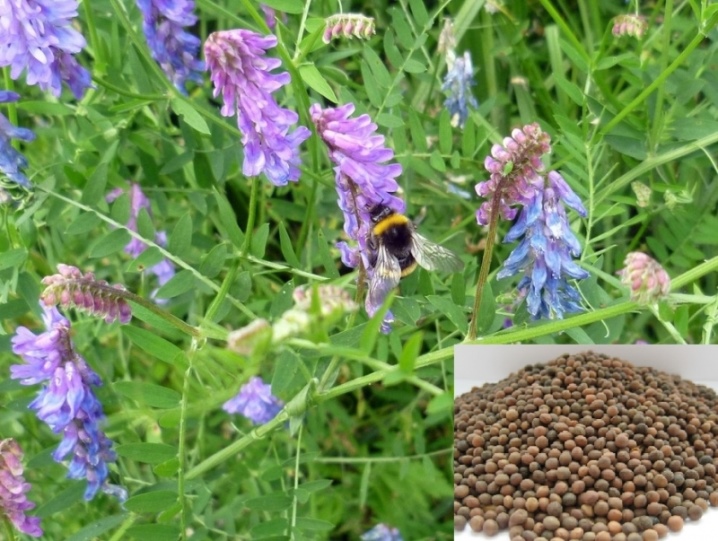
Basic sowing rules
For alfalfa to sprout, some important planting rules must be followed. So remember that Before planting seed, you should carefully prepare the soil. To do this, it is first dug up in the autumn period of the year. The depth should be at least 25 or 30 centimeters.
If it turns out that the selected land plot has excessive acidity, then it will be necessary to carry out processing with lime or gypsum before digging.
After that, in the spring, it is necessary to harrow, which contributes to the leveling of the land plot and moisture retention. Only then can alfalfa be sown. It is recommended to do this together with sand.
The sowing depth should be no more than 2 centimeters. After disembarking, you can walk through the territory with a special roller or pitchfork. This procedure will allow you to compact and level the area.
Remember that this plant is perennial, so you should expect the effect from it only a couple of years after planting.
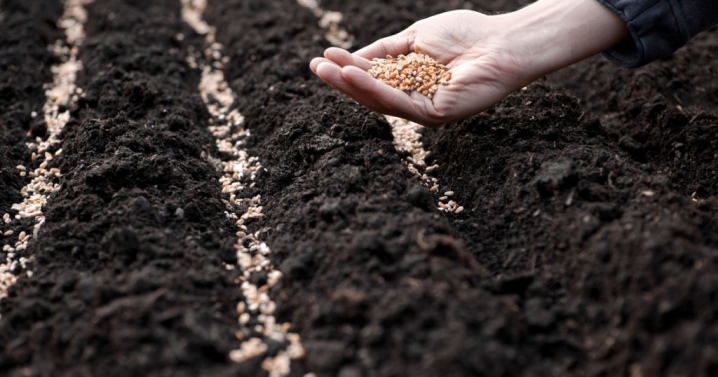
How to mow alfalfa?
This procedure is carried out during the period of the most active flowering. It usually occurs 55-60 days after sowing. Cut vegetation should be left on site to re-cut. Also, all this can be immediately sent to the compost pit.
Besides, if there is too much grass, then some of it can be used as feed for livestock. After a month, it will be possible to mow the formed aftermath, but at the same time, do not allow lignification of the stems. Such elements will not be able to fit as a siderat.
In spring sowing, the grass is mowed during flowering, when at least a small part has already formed its leaf blades and flower buds. Mowing should not be done in rainy weather; it is recommended to do this on sunny days.
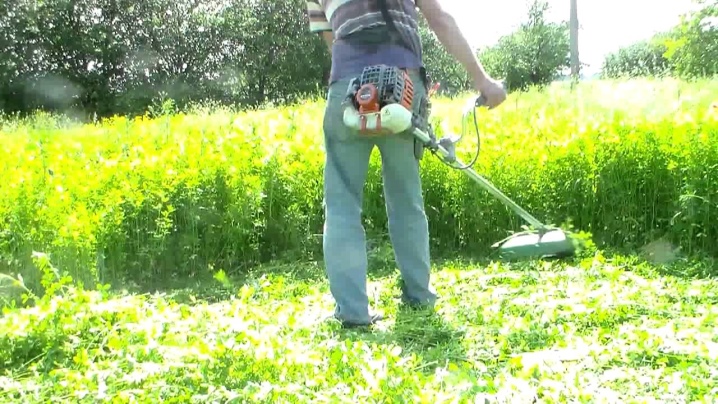
Remember not to cut alfalfa too low. Otherwise, young shoots may simply die. With incomplete opening of the buds, the procedure is carried out by about 5 centimeters. If the flowers have already fully opened, then you can increase the cut to 10 centimeters.
Too often, green manure should not be mowed, because this can lead to severe depletion of vegetation and further death of the crop.
If the plant looks too weak, then the mowing should be postponed.
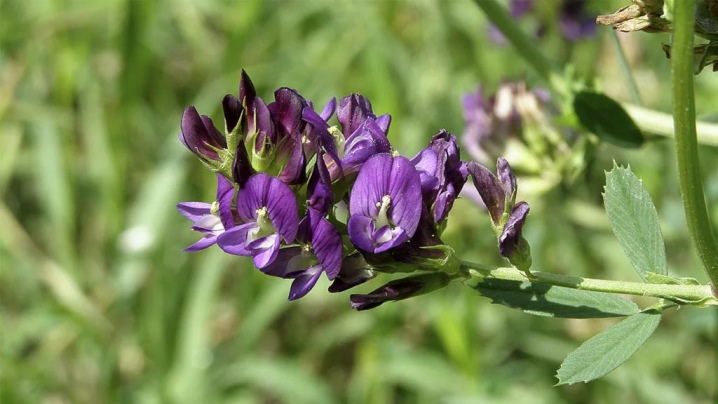
Tips for growing alfalfa in the next video.













The comment was sent successfully.